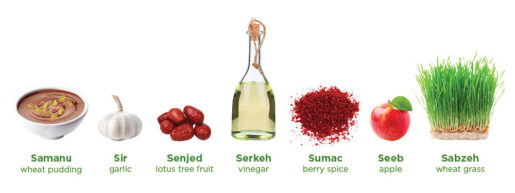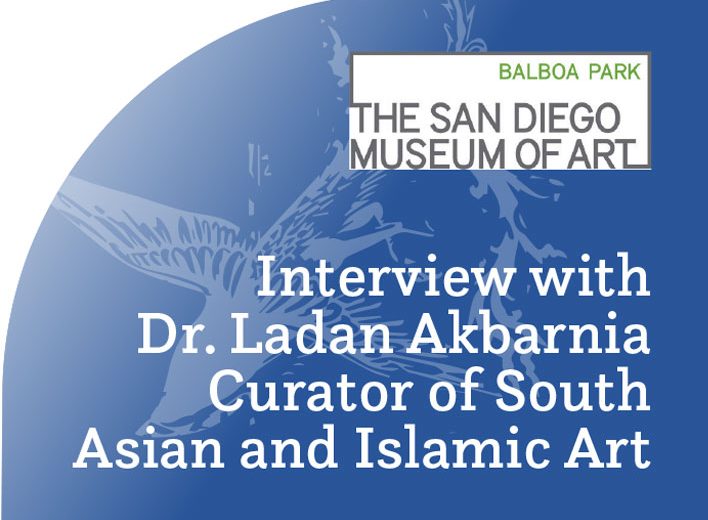Nowruz literally means “new day” and marks the first day of the Iranian calendar. There is much quibbling over the correct transliteration of the word into English and some people prefer to write Norouz or Norooz, among other spellings.

The day falls on the spring equinox, or the first day of spring, and at the moment the sun crosses the plane of the earth’s equator, making night and day of approximately equal length all over the Earth. It is usually on March 21, or the previous/following day. Some people refer to Nowruz as Eid, but it is not an Islamic tradition. Nowruz has been celebrated for over 3,000 years by more than 300 million people all around the world, regardless of religious belief or ethnic background, including in the Balkans, the Black Sea Basin, the Caucasus, Central Asia, the Middle East, and other regions.
In Persian mythology, King Jamshid introduced Nowruz to celebrate overcoming the hardships of winter and look forward to the promise of spring. King Jamshid is symbolic of the transition of Persians from animal hunting to animal husbandry–a more settled life in which the seasons played a major role.
The ancient Persian prophet Zoroaster (founder of the Zoroastrian religion) incorporated Nowruz as an elaborate feast to celebrate Ahura Mazda (Zoroastrian God) and the Holy Fire at the spring equinox.
In 487 B.C., King Darius the Great celebrated Nowruz at Persepolis, where he had newly built his palaces. The bas-reliefs at Persepolis today show people from all over Persia coming to offer Nowruz gifts to the king.
From about 248 B.C., Nowruz became the national holiday of successive ruling dynasties in Persia and survived as such even after the introduction of Islam in 650 A.D.
Omar Khayyam is attributed with the following description of Nowruz in ancient Persia in his Noruznameh:
“From the era of Keykhosrow till the days of Yazdegerd – last of the pre-Islamic kings of Persia, the royal custom was thus: on the first day of the New Year, Nau Ruz, the King’s first visitor was the High Priest of the Zoroastrians, who brought with him as gifts a golden goblet full of wine, ring, some gold coins, a fistful of green sprigs of wheat, a sword, a bow, and a handsome slave. In the language of Persia, he would then glorify God and praise the monarch. This was the address of the High Priest to the king:
Majesty, on this feast of the Equinox, first day of the first month of the year, seeing that thou hast freely chosen God and the Faith of the Ancient ones; may Surush, the Angel-messenger, grant thee wisdom and insight and sagacity in thy affairs. Live long in praise, be happy and fortunate upon thy golden throne, drink immortality from the Cup of Jamshid; and keep in solemn trust the customs of our ancestors, their noble aspirations, fair gestes and the exercise of justice and righteousness. May thy soul flourish; may thy youth be as the new-grown grain; may thy horse be puissant, victorious; thy sword bright and deadly against foes; thy hawk swift against its prey; thy every act straight as the arrow’s shaft. Go forth from thy rich throne, conquer new lands. Honor the craftsman and the sage in equal degree; disdain the acquisition of wealth. May thy house prosper and thy life be long!”
THE RITUALS SURROUNDING NOWRUZ
There are a number of rituals that Iranians practice before, during, and after Nowruz. They include:
The Haft-seen Table: Seven (haft) things beginning with the letter “S” (seen) are placed on a decorated table in families’ homes. The items and their symbolism are as follows: sabzeh, wheat, barley or lentil sprouts (rebirth and renewal); samanu, a sweet pudding (affluence); senjed, dried fruit of oleaster tree (love); seer, garlic (medicine); sib, apple (beauty and health); somaq, sumac (sunrise of a new day); and serkeh, vinegar (age, wisdom, and patience). Other items usually placed on the table include colored eggs (fertility), Hyacinth (symbol of spring), coins (prosperity in the new year), a mirror (reflection on the past year), candles (to radiate light and happiness), goldfish in a bowl (for Pisces, which the sun is leaving), and a holy book and/or poetry book (Shahnamah or Hafez).
Haji Firuz: Symbolizing the Sumerian god of sacrifice (who was killed at the end of each year and reborn at the beginning of the new year), Haji Firuz is a man with a painted face and a red costume who sings and dances through the streets playing tambourine, to herald the coming new year.
Chaharshanbe Suri: This festival of fire takes place on the eve of the last Wednesday of the year. People build fires to celebrate light over darkness (a testament to the tradition’s Zoroastrian roots) and jump over the fires while exclaiming, “Zardi-ye man az to, sorkhi-ye to az man” (meaning “my yellowness to you, your redness to me”), signifying rejuvenation from the fire.
Sizdah Bedar: On the thirteenth (sizdah) day of the new year, everyone leaves the house for the outdoors (bedar) to have picnics and parties. The thirteenth day is considered unlucky based on the ancient Persian belief that the 12 constellations in the Zodiac ruled the Earth for a thousand years each, after which the Earth collapsed into chaos. At the end of this day, the sabzeh from the haft-seen table is thrown into running water to cleanse the household of any bad luck or sickness that the sabzeh has absorbed.
THE OVERALL MERRYMAKING
During this time of festivities, family and friends visit each other and eat dishes such as sabzi polo mahi (green herbed rice with fish), reshte polo (rice and noodles), dolme barge (meat and vegetables in vine leaves), and kookoo sabzi (herb and vegetable omelette). Families buy new clothes and clean out their homes, ready for a fresh start. There are many parties that accompany the general joyous and optimistic mood.
HAPPY NEW YEAR EVERYONE OR
NOWRUZ KHOJASTE!
Sources:
https://www.un.org/en/observances/international-nowruz-day
https://www.fitzmuseum.cam.ac.uk/gallery/shahnameh/structure.html
https://www.ancient-origins.net/news-general/nowruz-persian-new-year-and-spring-equinox-002808
https://www.khanacademy.org/humanities/ap-art-history/ancient-mediterranean-ap/ancient-near-east-a/a/persepolis
https://cmes.fas.harvard.edu/files/NowruzCurriculumText.pdf
https://iranicaonline.org/articles/nowruz-i


















